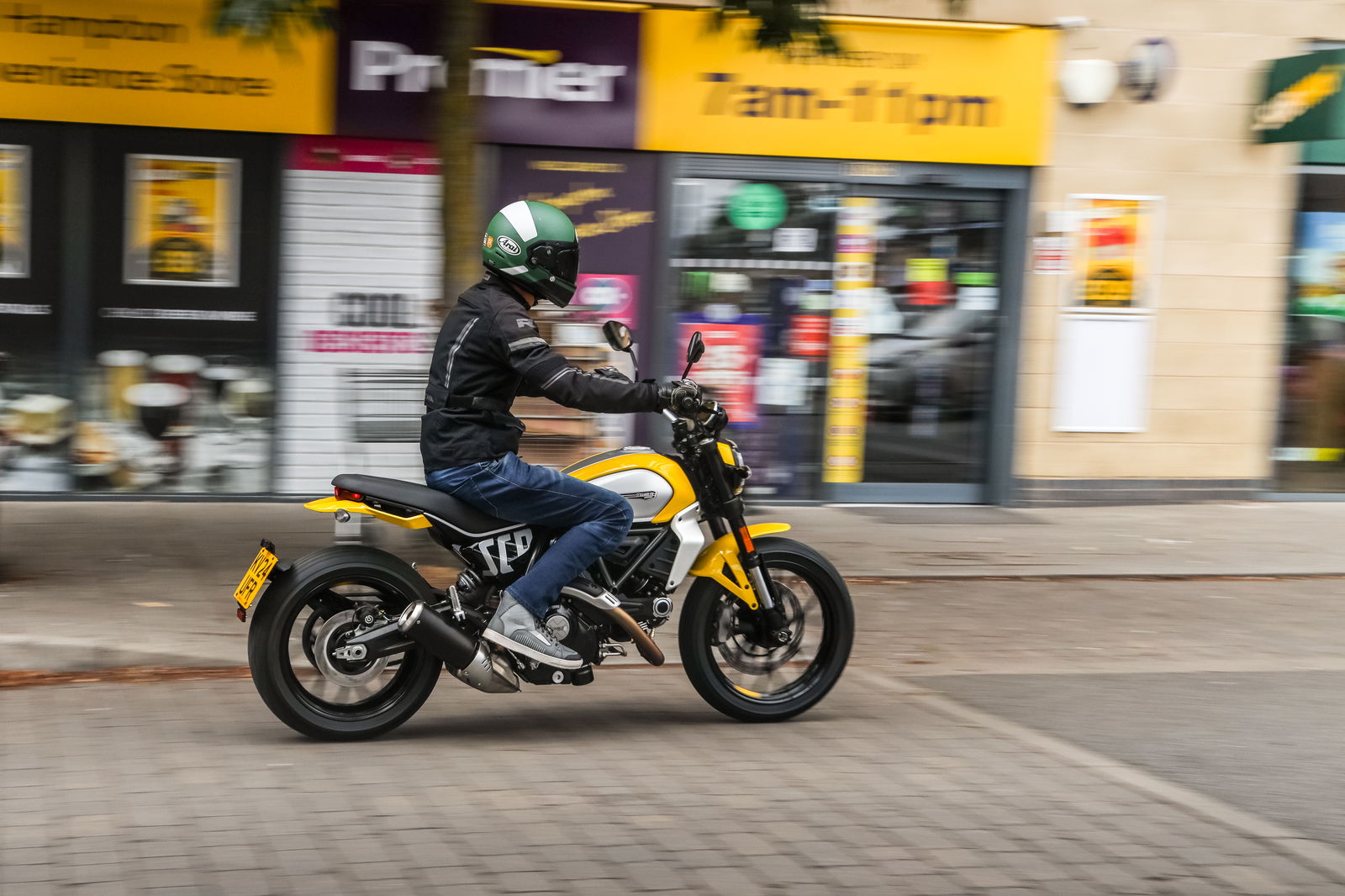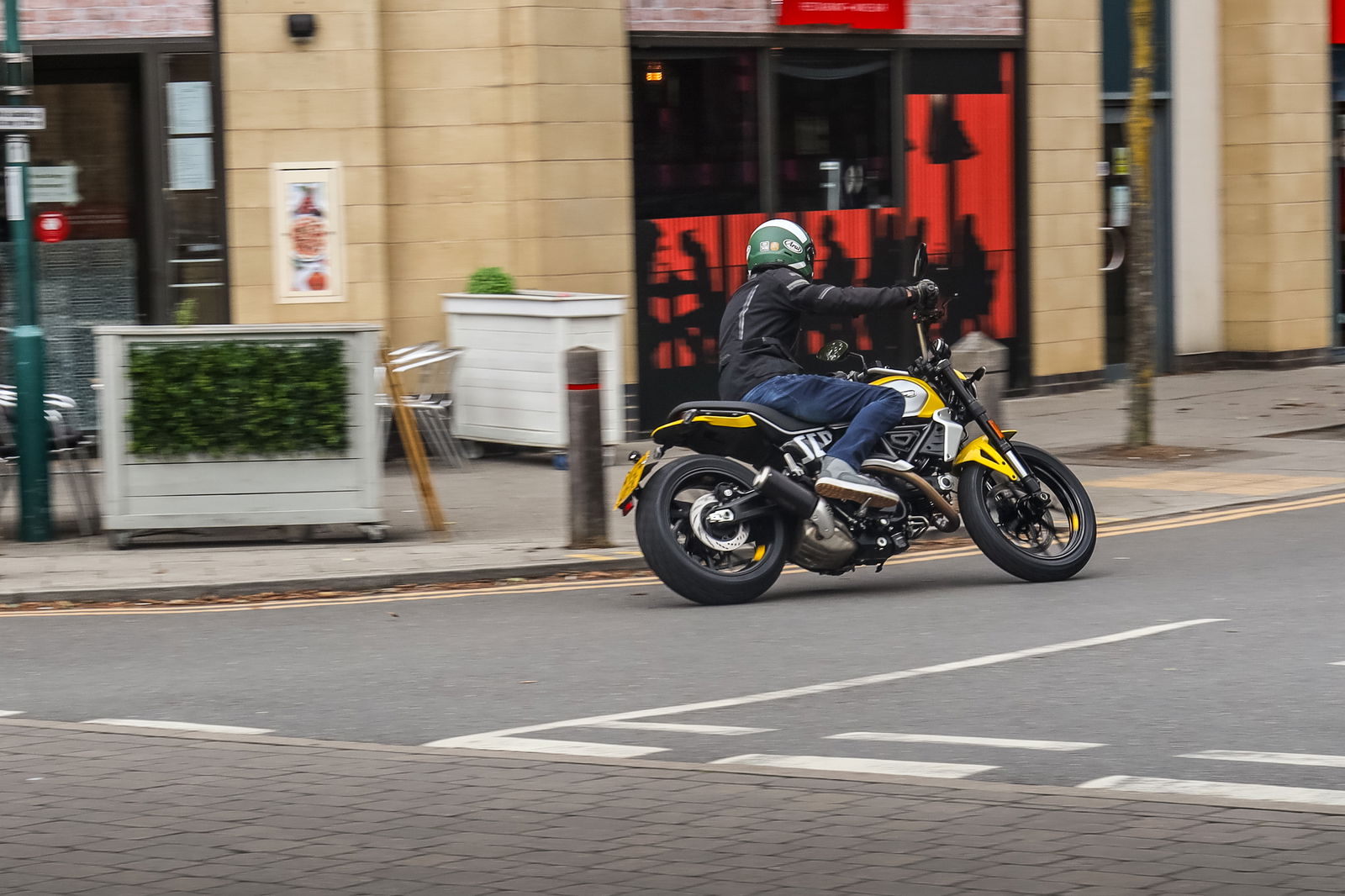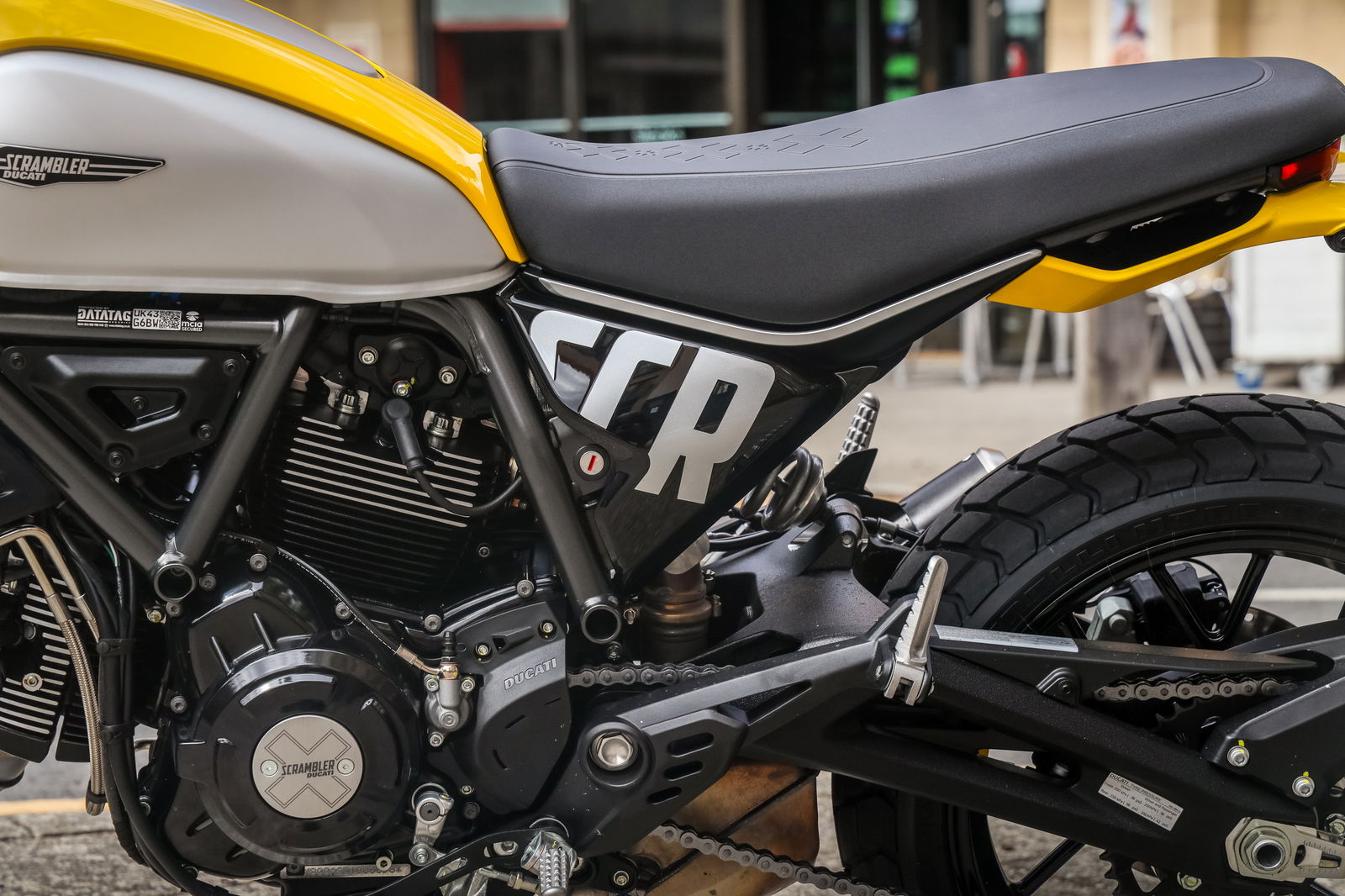Ducati Scrambler Review: The Cheapest And Sweetest Ducati?
The Scrambler 800 is the cheapest Ducati you can buy, but is it a poor relation?

Ducati motorcycles are priced a little above the industry average. At the pointy end of the range, it’s possible to blow the best part of £40,000 on the Panigale V4 R homologation special, while even the cheapest version of the Multistrada V2 adventure bike is £13,295, giving you a spec you’ll want to build on with pricey options. It is, though, just possible to spend a four-figure sum on something brand new from Borgo Panigale - the Ducati Scrambler Icon.
The entry point to both the Scrambler range and effectively the whole Ducati line-up, it’s the cheapest Ducati you can buy. Albeit not by much - you don’t have to spend drastically more to get yourself on a Monster.

But, as the cheapest Ducati, is the Scrambler a poor relation? To find out, we rode a Scambler Icon for several hundred miles in the UK, covering urban, rural and long-distance riding.
Ducati Scrambler pricing and availability
As noted, the range starts at £9,995 with the Scrambler Icon. For £10,995 you can have either the Scambler Full Throttle or Scrambler Nightshift. The Full Throttle only comes with a Rosso GP 19 and Dark Stealth two-tone finish, while the Nightshift is solely available in Nebula Blue. There’s more choice with the Icon, which comes in either 62 Yellow (as tested), Ducati Red or Thrilling Black.
A note on the Icon being the only Ducati you can buy new for a four-figure sum - it only will be if you show some restraint in the configurator. There are plenty of options to raise the price, including a £242.35 quickshifter (fitted as standard on the Full Throttle) and a whopping £2,200 for a scrambler-spec high-level exhaust.

Engine, chassis and technology
If blowing a fiver under £10k (or a bit more, assuming you’ve added options) is too much for you, Ducati has a ‘50 2 50’ finance offer allowing you to pay half now and nothing for two years, after which point you can either pay the remainder with no APR to pay, hand the bike back or part exchange for something else.
Powering the Scrambler is a suitably traditional engine - an air-cooled 803cc 'Desmodue' V-twin (or 'L-twin' as Ducati calls it due to the 90-degree bank angle) with two valves per cylinder. It produces 73bhp and 48.1lb ft of torque, which is developed much higher in the rev range than previous Scramblers - 7,000rpm up from 5,750rpm.

On a more modern note, that engine is operated via ride-by-wire, which means it’s possible to have more than one throttle map. On the tech front, you also get four levels of traction control and lean-sensitive ABS, so while this is the cheapest Ducati, and one that uses an old-school engine, this is still reasonably a sophisticated bike. There's also a 4.3-inch colour TFT display.
Further cementing this as the most trad’ Ducati, the Scrambler is built around a steel trellis frame. From that, Ducati hangs a non-adjustable 41mm KYB upside-down fork and a preload-adjustable KYB monoshock. In keeping with the scrambler ethos there’s an 18-inch wheel at the front paired with an 18-inch item at the rear, shod in mildly knobbly Pirelli MT60 RS tyres for that flat track look.

Slowing things down is a Brembo setup comprising a single 330mm disc squeezed by a four-piston caliper, with a 245mm disc paired with a single-piston floating caliper at the rear.
What’s it like to ride?
The Scrambler is one of those bikes you’ll want to have a good look at before you throw a leg over, and one you’ll be glancing back at after parking up. There are loads of lovely little details, including the two-tone finish on the tank, the Scrambler branding dotted about (I particularly like the etching on the handlebar clamp) and the embossed Ducati logo on the rear of the seat.
Switching on the ignition with the offset key barrel wakes up a display which is simple, but clearly displays all the key information, including the fuel level - something you don’t get on the considerably more expensive Panigale and Streetfighter models owing to their tank shape. And so, that’s one way the ‘baby’ Ducati can one-up its bigger brothers.

One odd quirk, though, was that on my first ride, the range showed at around 30 miles despite the tank being full, and it took a good 45 minutes of riding for the figure to slowly climb to where it should have been.
Thumbing the starter button awakes the L-twin to a suitably rumbly, if somewhat muted idle - that’s Euro5 for you. It’s an engine that’s best kept in its punchy midrange, even if you do need to rev fairly high to extract peak torque. Take it to the 9,200rpm redline and it starts to sound and feel a little breathless, while the bars can also become a bit vibey.
There are two different power modes to choose from, but I’m not sure why you’d ever pick the lower of the two. With the full 73bhp on offer, it’s not like the Scrambler is a rocket ship. It feels brisk, rather than outright fast.

Handlebars with a high rise and a low-lying tank means it feels like you’re sat ‘on’ the Scrambler rather than ‘in’, but it’s not a cramped rider for a six-and-a-bit-foot rider like myself, and I didn’t look as giant on it in the riding photos as I’d feared.
Despite the use of an 18-inch front wheel, the Scrambler still turns enthusiastically, helped by a reasonably low kerb weight of 185kg. In fact, it’s bags of fun to chuck around, whether you’re cutting in and out of traffic in built-up areas - arguably where the Scrambler is strongest - or tipping into a turn on a nice country road.
The suspension setup is soft enough that the bike feels comfortable and unintimidating for newer riders, but not so soft that it feels lazy in the bends or dives excessively under braking. Speaking of which, the brakes are decent enough if not a standout feature on the bike, and require a pretty hard squeeze of the lever before they do a great deal.

The Pirelli tyres are described as being a 60/40 on and off-road mix, but they feel a bit of token effort to tie in with the name of the bike when in reality it’s not a true Scrambler. Suspension travel is fairly modest at 150mm, and it’s on the road where it feels at home. In any case, despite a reasonable degree of nobbliness, the tyres give a decent amount of feedback and plenty of mid-corner confidence. You just can’t help but wonder if the Scrambler would be nicer still with some more asphalt-focused rubber.
Should you buy a Ducati Scrambler?
It’s hard to pick out some rivals to compare the Ducati Scrambler to. As it’s not really a ‘proper’ Scrambler, you could put it against other retro-styled middleweight naked bikes like the Triumph Trident 660 and Yamaha XSR700.

Against those two, the Scrambler looks expensive considering it’s no more powerful and not really any more sophisticated. Then again, if you’re eying up one in the first place, the chances are the brand is a big draw for you.
If that’s the case, you’ll be very happy with one of these. It may be the cheapest Ducati, but it doesn’t feel like it. The L-twin is maybe a little lacklustre compared to the more potent, water-cooled Testastretta used in slightly spendier Ducati models, but it makes the right rumbly noises, and the fact that it’s air-cooled is a nice throwback. It also has the same quality feeling of those pricier models.
It’s a bike for good, clean fun that won’t get more experienced riders into trouble, and will be ideal for those taking their first steps into the two-wheeled world.


